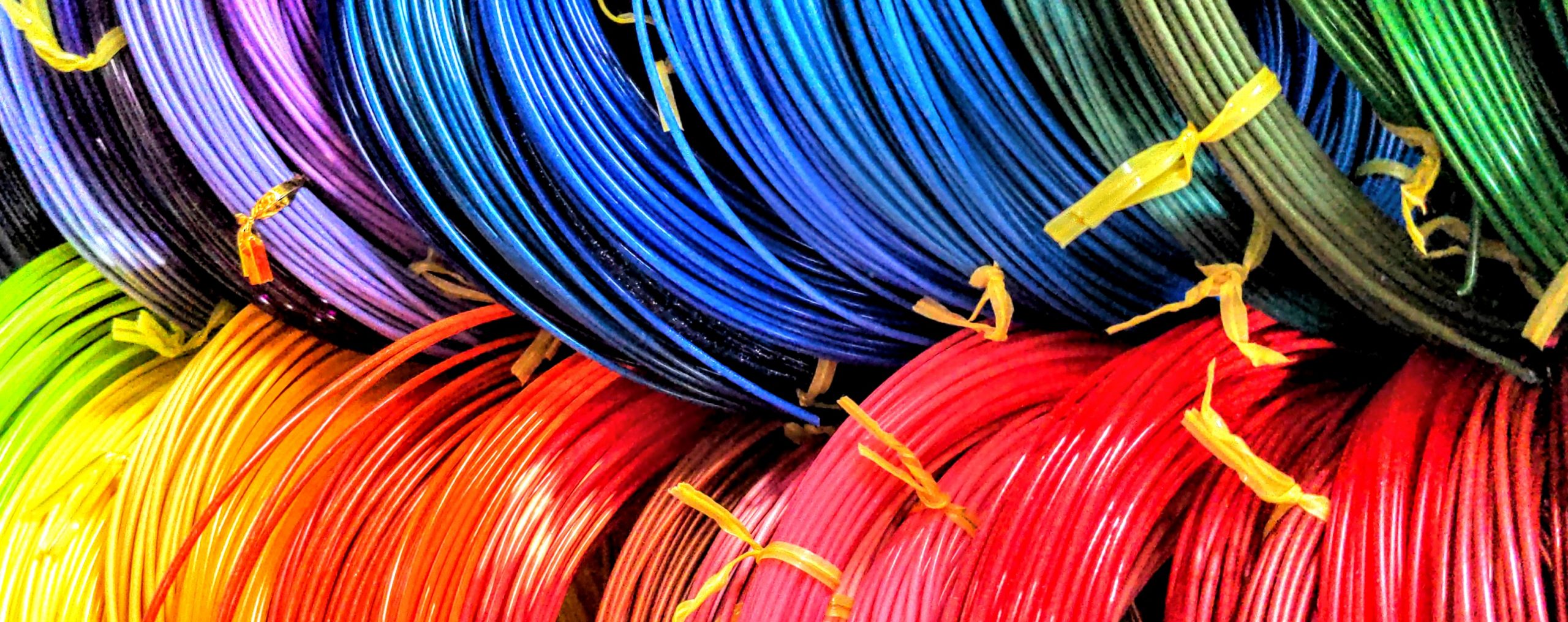3-D printing in plastic uses spools of plastic string (filament) as the raw material. The filament is melted and extruded layer by layer to build up the 3-D shape that you want manufactured. Different filaments have different characteristics that make them suitable for particular purposes.
Common filaments we print with include PLA, PETG, ABS, HIPS, TPU, PC.
PLA – Polylactic Acid – easy-to-print, plastic made from corn starch, biodegradable. Comes in hundreds of colors and variations, PLA+, PLA-HT. Good for models and figures especially where mechanical or temperature resistance aren’t needed.
PETG – Polyethylene Terephthalate modified with Glycol – higher temperature resistance, used for printing technical and mechanical parts. Glossy surface, doesn’t shrink or warp.
ABS – Acrylonitrile Butadiene Styrene – Opaque, high temperature plastic, strong mechanical properties. Releases fumes, tends to curl.
HIPS – High Impact Polystyrene – lightweight, strong, structural plastic, relatively high temperature.
Flexibles (TPU, TPE) – Thermo Polyurethane/Thermoplastic Elastomer – Rubbery materials with a high elasticity. Used for bumpers, flexure joints, traction surfaces (tires).
PC – Polycarbonate – high-temperature, very strong, nearly transparent, very hygroscopic.
Each of these filaments requires different storage conditions, handling, nozzle temps and bed temperatures, bed surface/treatment (PEI, PVA, ABS slurry) to print successfully.
For those who are doing your own 3-D printing, consider a Maker Box subscription (several options for amount and frequency) which will get you a wide variety of colors, mostly PLA, but a variety of other materials included as well.
